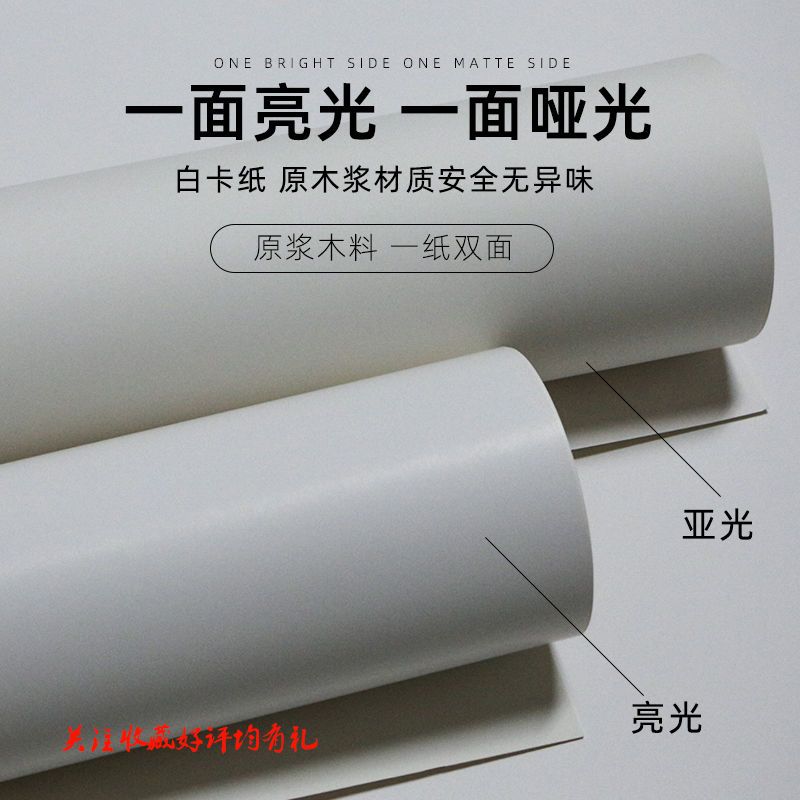揭秘卡纸:品质、价格与使用效果大比拼
尕枯非生
2024-10-19 18:26:50
0次
揭秘卡纸:品质、价格与使用效果大比拼
卡纸作为一种广泛应用于日常生活中的纸制品,具有广泛的应用领域和市场需求。本文将针对卡纸的品质、价格以及使用效果进行深入探讨,帮助读者更好地了解卡纸市场,为购买和使用提供参考。
一、卡纸的品质
卡纸的品质主要取决于其原材料、生产工艺以及成品的质量检测。优质的卡纸通常采用高纯度的木浆作为原材料,经过精细的制浆、漂白、磨光等工艺流程,生产出的纸张具有较高的白度、平滑度和强度。此外,优质的卡纸在生产过程中还会进行严格的质量控制,确保产品的稳定性和可靠性。
二、卡纸的价格
卡纸的价格受多种因素影响,包括原材料成本、生产工艺、品牌、市场需求等。一般来说,优质的卡纸由于采用高品质的原材料和先进的生产工艺,价格相对较高。而一些普通卡纸则采用较低成本的原材料和简单的生产工艺,价格相对较低。此外,不同品牌和不同规格的卡纸价格也会有所差异。
三、卡纸的使用效果
卡纸的使用效果主要取决于其品质和用途。优质的卡纸在色彩表现、平滑度、强度等方面具有优异的表现,能够满足各种高要求的用途,如制作画册、相册、名片等。而普通卡纸则适用于一些简单的用途,如包装、书写等。此外,卡纸的厚度、颜色和纹理等也会影响其使用效果。一般来说,较厚的卡纸具有更好的耐用性和立体感,而不同颜色的卡纸和纹理则能够为使用者带来不同的视觉体验。
四、翻译成英文
Unveiling the Mysteries of Cardboard: A Comparison of Quality, Price, and Usage Effects
As a widely used paper product in daily life, cardboard has a wide range of applications and market demand. This article will delve into the quality, price, and usage effects of cardboard to help readers better understand the cardboard market and provide a reference for purchasing and usage.
I. Quality of Cardboard The quality of cardboard mainly depends on its raw materials, production process, and finished product quality inspection. High-quality cardboard typically uses high-purity wood pulp as its raw material and is processed through meticulous steps such as pulping, bleaching, and polishing. The resulting paper has a high degree of whiteness, smoothness, and strength. Additionally, high-quality cardboard undergoes strict quality control during production to ensure product stability and reliability. II. Price of Cardboard The price of cardboard is affected by various factors, including raw material costs, production processes, brands, and market demand. Generally, high-quality cardboard commands a higher price due to the use of higher-grade raw materials and advanced production processes. In contrast, some ordinary cardboard uses lower-cost raw materials and simpler production methods, resulting in a relatively lower price. Furthermore, the prices of different brands and specifications of cardboard also vary. III. Usage Effects of Cardboard The usage effects of cardboard primarily depend on its quality and purpose. High-quality cardboard exhibits excellent performance in color representation, smoothness, strength, and other aspects, meeting various demanding uses such as producing booklets, photo albums, and business cards. In contrast, ordinary cardboard is suitable for simpler uses such as packaging and writing. Additionally, the thickness, color, and texture of cardboard also affect its usage effects. Generally, thicker cardboard has better durability and a sense of three-dimensionality, while different colors and textures of cardboard can provide users with different visual experiences.相关内容
热门资讯
办公室常见卡纸类型与优缺点比较
文章概述了办公室常见的卡纸类型及其优缺点比较,包括铜版纸、哑粉纸、艺术纸和皱纹纸。每种卡纸都有其独特...
打印机的得力助手:卡纸的挑选与...
本指南详述了卡纸种类选择、使用技巧及卡纸处理方法,强调了纸张厚度、质量及适用性的重要性,提供了正确装...
卡纸的质量标准及购买指南
卡纸常用于印刷和制作工艺中,其质量标准包括厚度、表面质量、颜色均匀度、强度和耐折度及环保性。购买时需...
卡纸——办公室里的得力小助手
卡纸是办公室得力小助手,具有基础打印功能、便捷性、多样性和可定制性,且环保。可作辅助工具,提高工作效...
为什么选择卡纸作为办公耗材?—...
卡纸因其耐用、清晰、环保和适用性广等特点,被广泛用于办公场景中。其高性价比和环保理念符合现代办公需求...
解析卡纸:如何成为高效办公的得...
摘要:解析卡纸在办公中是常见问题,但成为高效助手需掌握预防措施、快速解决技巧,并持续学习更新知识。通...
常见办公卡纸类型及优缺点分析
文章摘要:
办公卡纸种类繁多,各具优缺点。常见的类型包括复印纸、彩色卡纸、艺术纸、相片纸和硫酸纸。...
卡纸的多样应用:办公耗材的新思...
卡纸是一种常见办公耗材,具有多样应用和无穷创新潜力。可用于艺术创作、手工制作、教育及礼品包装等领域。...
办公必备:卡纸的种类、用途及选...
卡纸是常见办公用品,分多种种类和用途。选购时需考虑品质、品牌、规格、价格和环保等因素。正确使用和保存...
高效、环保的办公选择——卡纸的...
卡纸是坚固、光滑的纸张,具有高强度、耐用、环保等优点,适用于办公和工艺用途。其良好的打印效果、防潮防...



